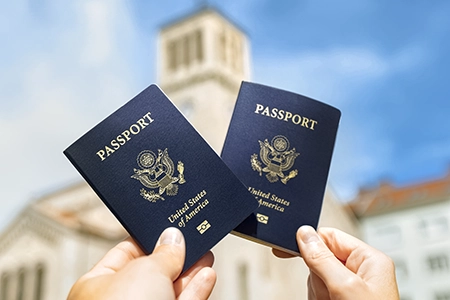In an increasingly interconnected world, the ability to transcend language barriers is more crucial than ever. Machine Translation (MT), the automated process of translating text from one language to another, stands at the forefront of this linguistic revolution. While the concept of MT might seem like a product of modern technological advancements, its roots extend back decades, reflecting a longstanding human aspiration to bridge communication gaps across cultures.
Today, as we stand on the cusp of a new era in MT, marked by groundbreaking developments and enhanced capabilities, the potential for global understanding and connectivity has never been greater. This blog post delves into the dynamic landscape of Machine Translation, particularly focusing on its evolution, current state, and the exciting prospects it holds for the future. With a special emphasis on English-Turkish translation, we explore how these advancements are reshaping how we approach language translation and how they are fostering a more connected global community.
Join us as we journey through the transformative world of Machine Translation technologies, exploring their potential to break down linguistic barriers and bring the world closer together beyond the metaphorical Tower of Babel.

Expert Turkish English Translation Services
Looking for a top-notch Turkish English translator? Haluk Aka Ltd. offers unparalleled expertise in translating a wide range of documents. Whether it’s for business, legal, or personal use, our team ensures accuracy and cultural relevance in every translation.
The Evolution of Machine Translation
The journey of machine translation (MT) is a fascinating tale of technological evolution, marked by continuous innovation and a quest to perfect the art of automated language conversion. MT’s history is rich and varied, beginning in the mid-20th century when the idea of using computers for translation first emerged.
In its early days, MT was predominantly rule-based. This approach relied on a set of linguistic rules and dictionaries painstakingly programmed into computers. These rule-based systems attempted to translate text by applying these predefined rules, essentially converting words and phrases from one language to another through direct substitution. While revolutionary for its time, this method had limitations, particularly in handling the nuances and complexities inherent in human languages.
The 1990s heralded a significant shift by introducing statistical machine translation (SMT). This paradigm shift was driven by the burgeoning power of the internet and the exponential increase in available digital text. SMT systems used statistical probability models to translate text, learning from vast corpora of bilingual text data. This approach was more dynamic and context-aware compared to rule-based systems. However, it still struggled with linguistic subtleties and often produced somewhat unnatural or grammatically awkward translations.
A groundbreaking development came with Neural Machine Translation (NMT) around 2017. NMT represented a leap forward, employing advanced artificial intelligence and neural network algorithms to learn and translate languages. These systems didn’t just translate words or phrases; they sought to understand entire sentences and paragraphs, capturing context, tone, and nuances far more effectively. NMT brought unprecedented fluency and coherence to machine translations, making them more reliable for a broader range of applications.
In the context of English-Turkish translation, these advancements have been particularly significant. The linguistic and syntactic differences between English and Turkish posed unique challenges for earlier MT systems. Turkish, an agglutinative language, constructs words by stringing together morphemes, making it structurally very different from English. As MT technologies evolved, they better handled these complexities, offering more accurate and readable translations between these two linguistically distinct languages.
As we continue to advance in machine translation, the focus is on enhancing accuracy and bridging cultural nuances, a testament to the incredible journey of MT from its rudimentary beginnings to its current state-of-the-art status.

Seamless English Translation for Your Needs
Navigate the complexities of the English language with ease. At Haluk Aka Ltd., our Turkish English translation services are tailored to meet your specific requirements, ensuring clarity and precision. Trust us to bridge the language gap.
Current State of Neural Machine Translation
As we delve into the present state of Neural Machine Translation (NMT), it is clear that this technology has not just evolved but has revolutionised the field of machine translation. NMT, at its core, leverages the power of artificial intelligence (AI) and deep learning to interpret and translate languages in a profoundly different way from its predecessors.
Today’s NMT systems are designed to learn from an extensive array of language data, encompassing a variety of styles, contexts, and nuances. This learning process is continuous and dynamic, allowing NMT to adapt and improve over time. One of the key measures of NMT’s effectiveness is the Editing Distance, which gauges the number of edits required to bring a machine-generated translation up to par with a human translator’s output. The annual improvement in NMT is estimated at 3-7%, underscoring its rapidly advancing capabilities.
This advancement is particularly evident in translating linguistically diverse pairs like English and Turkish. The agglutinative nature of Turkish, where the concatenation of morphemes forms words, presents unique challenges in translation. NMT’s ability to understand and process the context and structure of sentences has led to significant improvements in handling such complexities. The translations are more accurate and natural in tone, capturing the essence of the original text more effectively.
Furthermore, integrating NMT into various applications and services has made translation more accessible and widespread. From instant translation on web platforms to real-time interpretation in communication apps, NMT is becoming integral to our digital experience. This accessibility drives a surge in content localisation, enabling businesses and individuals to reach a broader global audience.
Despite these advancements, NMT is not without its challenges. The quest for perfection continues, with ongoing research focused on understanding and interpreting idiomatic expressions, cultural nuances, and context-dependent meanings. Moreover, while NMT has made significant strides in many language pairs, there remains a disparity in translation quality for less commonly spoken languages or those with limited digital resources.
In summary, the current state of Neural Machine Translation is one of remarkable progress and potential. Its evolving nature holds the promise of even more refined and accurate translations in the future, further diminishing the language barriers in our increasingly globalised world.

Your Partner in Turkish English Translation Excellence
Embark on a journey of seamless communication with Haluk Aka Ltd.’s Turkish English translation services. Our team of experts is dedicated to delivering translations that resonate with your audience, maintaining the essence of the original text.
Future Trends and Predictions
As we peer into the horizon of machine translation, several emerging trends and predictions paint an exciting picture of what the future holds. Neural Machine Translation (NMT) is at the heart of this evolution, with its capabilities expanding and its applications diversifying.
- Continued Improvement in Accuracy and Contextual Understanding: The trajectory of NMT suggests a continuous enhancement in accuracy and the ability to grasp context and cultural nuances. This is particularly significant for complex language pairs like English and Turkish, where capturing linguistic subtleties is crucial. Future NMT systems are expected to become even more adept at understanding idioms, colloquialisms, and culturally specific references, making translations both linguistically accurate and culturally resonant.
- Advancements in Real-Time Translation: The future will likely see a surge in real-time translation solutions facilitated by NMT. This will have profound implications for global communication, breaking down language barriers in real-time conversations, international conferences, and online interactions. The goal is to achieve seamless, instant translation that is as natural and effective as conversing in one’s native language.
- Increased Personalisation and Adaptability: Future NMT systems are anticipated to offer greater personalisation. This means translations that are accurate and tailored to specific industries, professional jargon, or even individual preferences. Such adaptability will enhance the utility of NMT in diverse fields, from legal and medical to technical and creative domains.
- Expansion into Less Common Languages: One of the significant challenges of current NMT is the limited focus on widely spoken languages. However, future developments are expected to broaden this scope, incorporating less common and underrepresented languages. This expansion will not only provide equitable access to translation technologies but also help in preserving linguistic diversity.
- Integration with Other AI Technologies: We can anticipate a deeper integration of NMT with other AI technologies, such as voice recognition and semantic analysis. Such integration will enable more sophisticated applications, from intelligent virtual assistants capable of multilingual interactions to advanced content creation tools that generate and translate content simultaneously.
- Ethical and Privacy Considerations: As NMT becomes more embedded in our daily lives, ethical and privacy considerations will come to the fore. Ensuring data security, respecting linguistic diversity, and preventing biases in translation will be key areas of focus. Transparent and ethical use of AI in NMT will be crucial for its acceptance and effectiveness.
In conclusion, the future of Neural Machine Translation is not just about technological advancements but also its broader impact on society, culture, and communication. As we advance, NMT is poised to become an even more integral part of our globalised world, bridging languages and cultures with unprecedented ease and effectiveness.
Revolutionising Translation: The Vital Role of Translation Memory
Translation Memory (TM) stands out as a pivotal component in the evolving landscape of translation technologies, revolutionising how we approach the translation process. While Neural Machine Translation (NMT) captures the spotlight with its advanced capabilities, TM plays an equally crucial role, albeit in a more supportive yet transformative capacity.
Essence of Translation Memory:
Translation Memory is a database storing previously translated segments – sentences, paragraphs, or phrase elements. Developed in the early 1990s, this technology provides a foundation for efficient and consistent translation. It enables translators to reuse existing translations, ensuring consistency across different texts and reducing the time and effort needed for translating similar or repetitive content.
Synergy with Machine Translation:
TM and NMT are not competitors; rather, they complement each other. While NMT offers dynamic translation capabilities, TM provides a repository of past translations that can be leveraged for quality and consistency. This synergy is particularly beneficial in projects involving extensive documentation or content with repetitive elements. TM can significantly speed up the translation process while maintaining high quality and uniformity.
The Evolving Role of TM:
As machine translation technologies advance, TM’s role is also transforming. TM is increasingly being used as a training tool for NMT engines. By providing a rich database of translated content, TM helps fine-tune the NMT algorithms, enabling them to produce more accurate and contextually appropriate translations. This integration is leading to a new era of translation where the blend of human expertise and machine intelligence creates an optimal translation environment.
Impact on English-Turkish Translation:
In English-Turkish translation, the combination of TM and NMT holds great promise. With its unique linguistic structure, Turkish poses specific challenges that NMT is learning to navigate. TM’s repository of past translations is a valuable resource, aiding NMT systems in understanding the intricacies of Turkish syntax and idioms. This partnership is instrumental in enhancing the quality and efficiency of English-Turkish translations.
Conclusion
Translation Memory, in conjunction with Neural Machine Translation, is shaping the future of translation. This powerful combination not only improves the efficiency and accuracy of translations but also ensures linguistic consistency and quality. As we move forward, the role of TM in training and supporting NMT systems will be key in overcoming language barriers making high-quality translation more accessible and efficient across various language pairs, including English and Turkish.
Challenges and Opportunities in English-Turkish Translation
While burgeoning with possibilities, the realm of English-Turkish translation also presents a unique set of challenges and opportunities that shape the future of machine translation in this language pair. As we delve deeper into this specific linguistic landscape, it becomes evident that the path to seamless translation between these two languages is as complex as promising.
Linguistic Complexity
With its agglutinative structure, the Turkish language poses significant challenges to translation, particularly from English. Turkish constructs words by appending affixes to a root word, which can dramatically alter the meaning and function of the word in a sentence. This complexity requires advanced understanding by translation technologies, not just of individual words, but of the morphological and syntactic nuances that define Turkish.
Cultural Nuances
Beyond the linguistic aspects, cultural nuances play a pivotal role in translation. English and Turkish have distinct cultural contexts that must be considered to achieve translations that are both linguistically accurate and culturally appropriate. Understanding idiomatic expressions, local phrases, and context-specific references is crucial for translations that resonate with the target audience.
Opportunities for NMT
The advancement of Neural Machine Translation (NMT) presents significant opportunities. NMT’s ability to learn from vast datasets and understand context and subtleties offers a promising avenue for more accurate English-Turkish translations. As NMT continues to evolve, it is expected to become more adept at handling the complexities of Turkish grammar and the cultural intricacies of both languages.
Potential for Enhanced Communication
The improvement in English-Turkish translation has far-reaching implications. It opens up avenues for enhanced communication and collaboration between English and Turkish speakers in various fields, such as business, education, and technology. This facilitates information exchange and cultural understanding, fostering stronger ties between the two linguistic communities.
Future Developments
Continuous advancements in machine translation technology, particularly in NMT, will likely bridge many of the current gaps in English-Turkish translation. The integration of Translation Memory, ongoing refinements in AI algorithms, and increased attention to underrepresented languages in MT research will further enhance the quality and scope of translations between these languages.
Conclusion
The journey of English-Turkish translation within the field of machine translation is one of both challenges and immense opportunities. As technology advances, the potential for accurate, nuanced, and culturally sensitive translations grows, promising a future where language barriers become increasingly surmountable and cross-cultural communication flourishes.
Final Word
As we conclude our exploration of the vibrant and dynamic world of machine translation technologies, it’s clear that the future is not just bright; it’s transformative. The advancements in this field, particularly in Neural Machine Translation (NMT), herald a new era in global communication and business, breaking down linguistic barriers that have long stood in the way of seamless international interaction.
The Promising Future of MT Technologies
The journey from rule-based to neural network-based translation systems underscores a remarkable trajectory of progress. With each leap forward, MT technologies are becoming more sophisticated, more accurate, and more attuned to the subtleties of human language. This evolution is enhancing the efficiency of translation and expanding its possibilities, making it more inclusive and accessible across a wide range of languages, including complex pairs like English and Turkish.
Transforming Global Communication and Business
The implications of these advancements extend far beyond the realms of linguistics and technology. They are set to revolutionise global communication, facilitating smoother interactions and exchanges across borders. In the business world, this means opening up new markets and opportunities, enabling companies to communicate more effectively with diverse audiences, and fostering a deeper understanding of cultural nuances and local contexts.
The Vital Role of Human Oversight and Cultural Understanding
However, human oversight and cultural understanding in translation remain paramount amidst this technological revolution. While machines can translate words and phrases, the human element is essential in interpreting and conveying cultural nuances, idiomatic expressions, and context-specific meanings. The fusion of advanced technology with human expertise and insight is the cornerstone of effective translation, ensuring that messages are accurately translated, culturally relevant and resonant.
In conclusion, as machine translation technologies advance, they promise to reshape the global communication landscape, bridging language gaps with unprecedented ease. Yet, the blend of technological prowess with human empathy and cultural intelligence will ultimately define the success and impact of these translations in connecting people, cultures, and businesses across the globe.

Before you go…
Looking for superior translation services that are fast, precise, and budget-friendly? Look no further! We offer top-notch translation solutions at unbeatable rates. Contact us now to get a quote and let us help you communicate effectively in any language.
Further Reading
- Transforming machine translation: a deep learning system reaches news translation quality comparable to human professionals – This study, published in Nature Communications, discusses a deep-learning system named CUBBITT. It challenges the long-held view that human translation quality is unattainable for computer translation systems. The study reveals that CUBBITT significantly outperformed professional-agency English-to-Czech news translation in preserving text meaning and shows substantial fluency improvements over previous systems. Read Article Here.
Follow Us on Your Favourite Social Network




